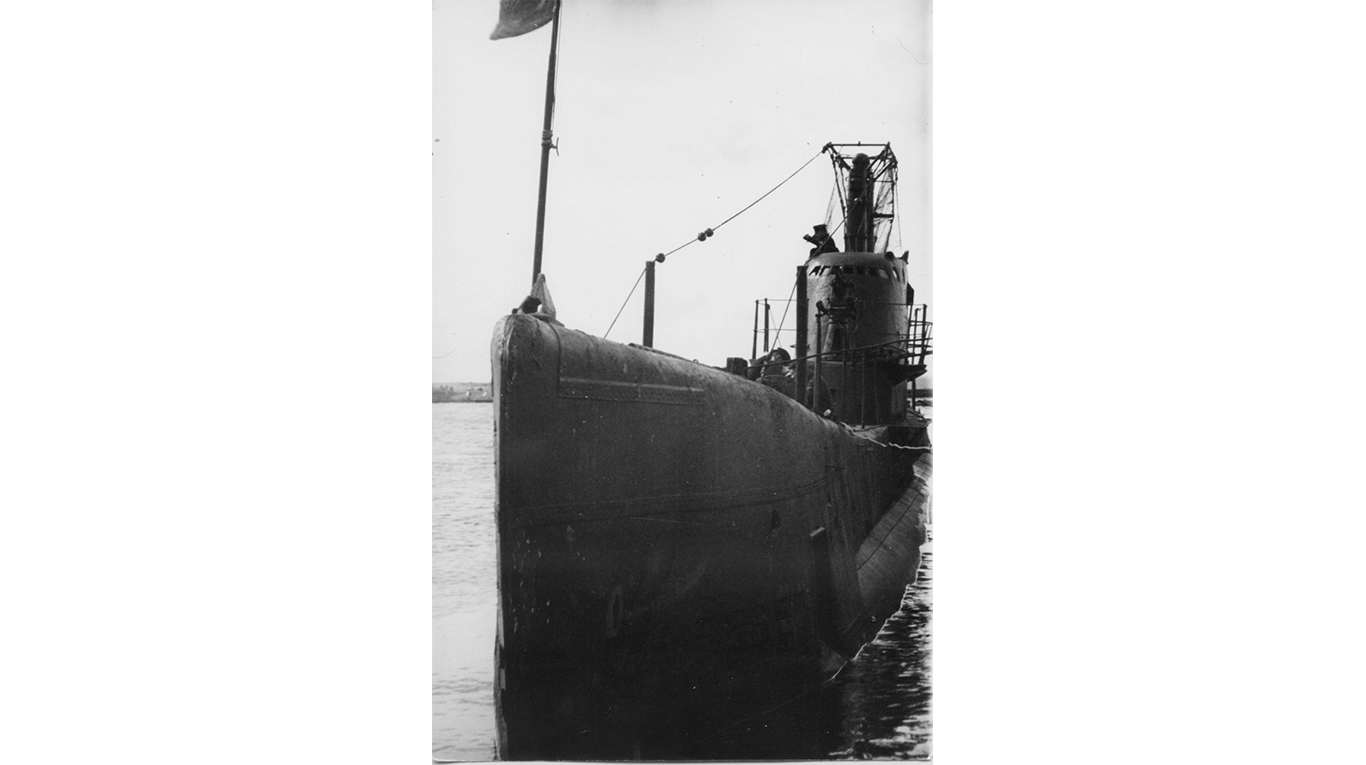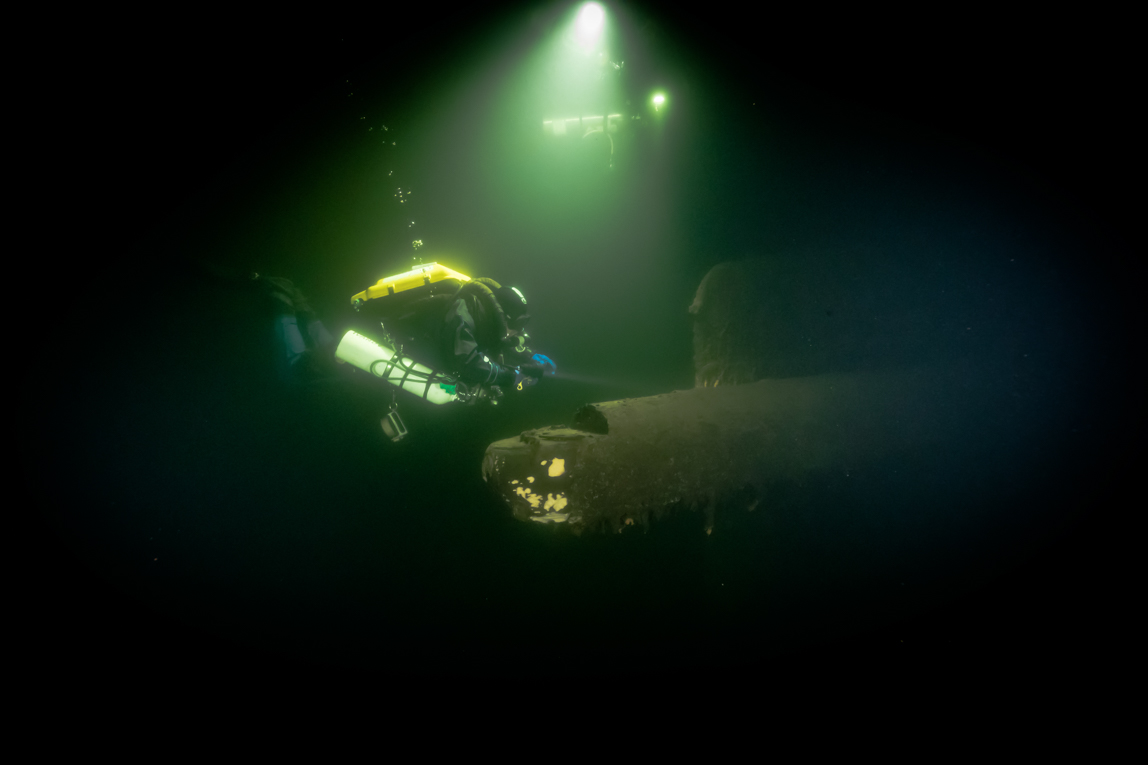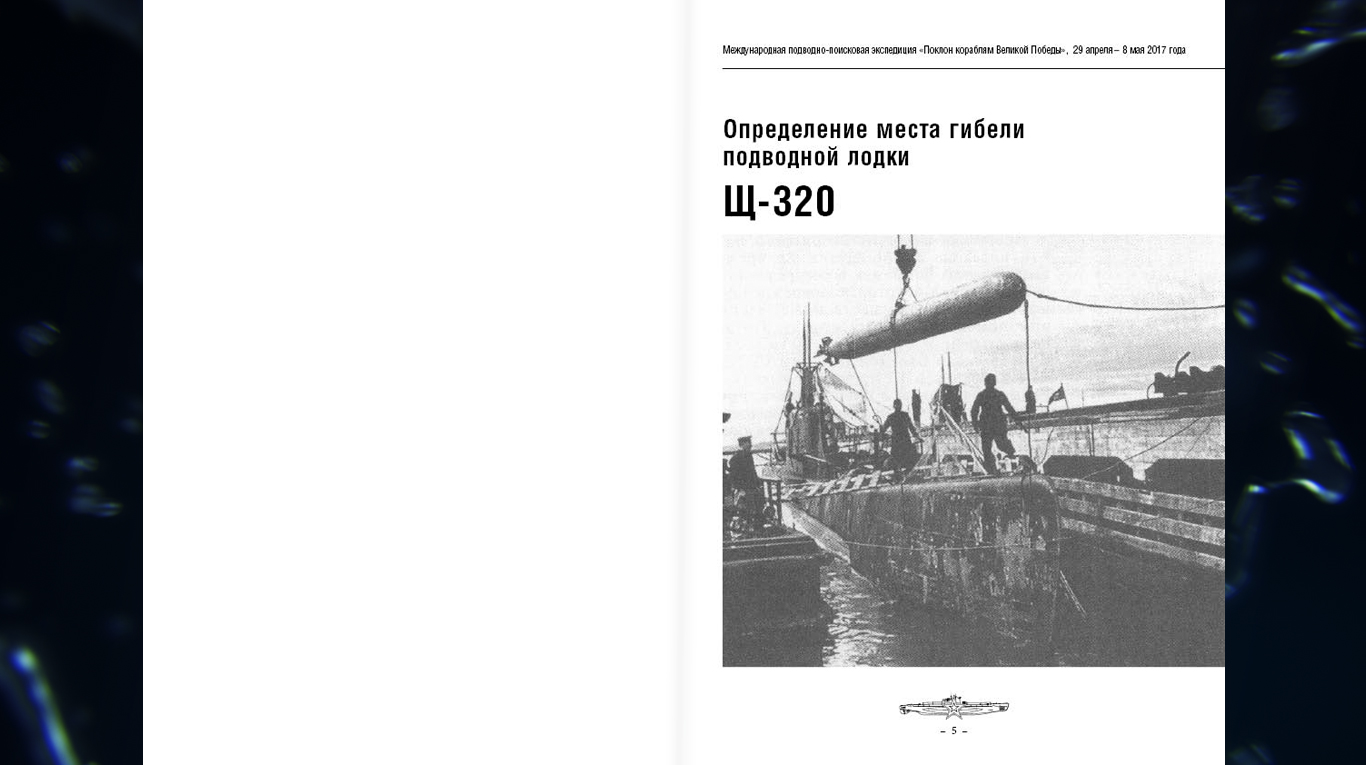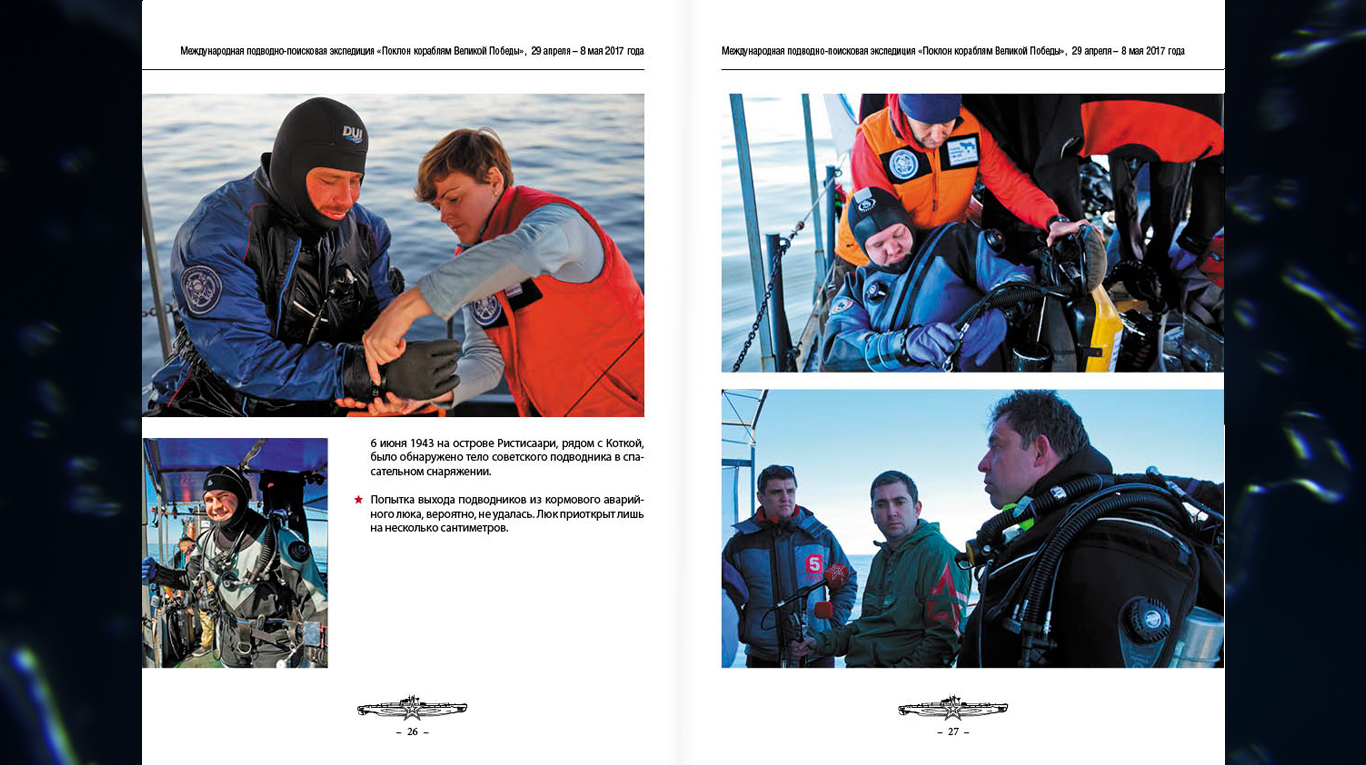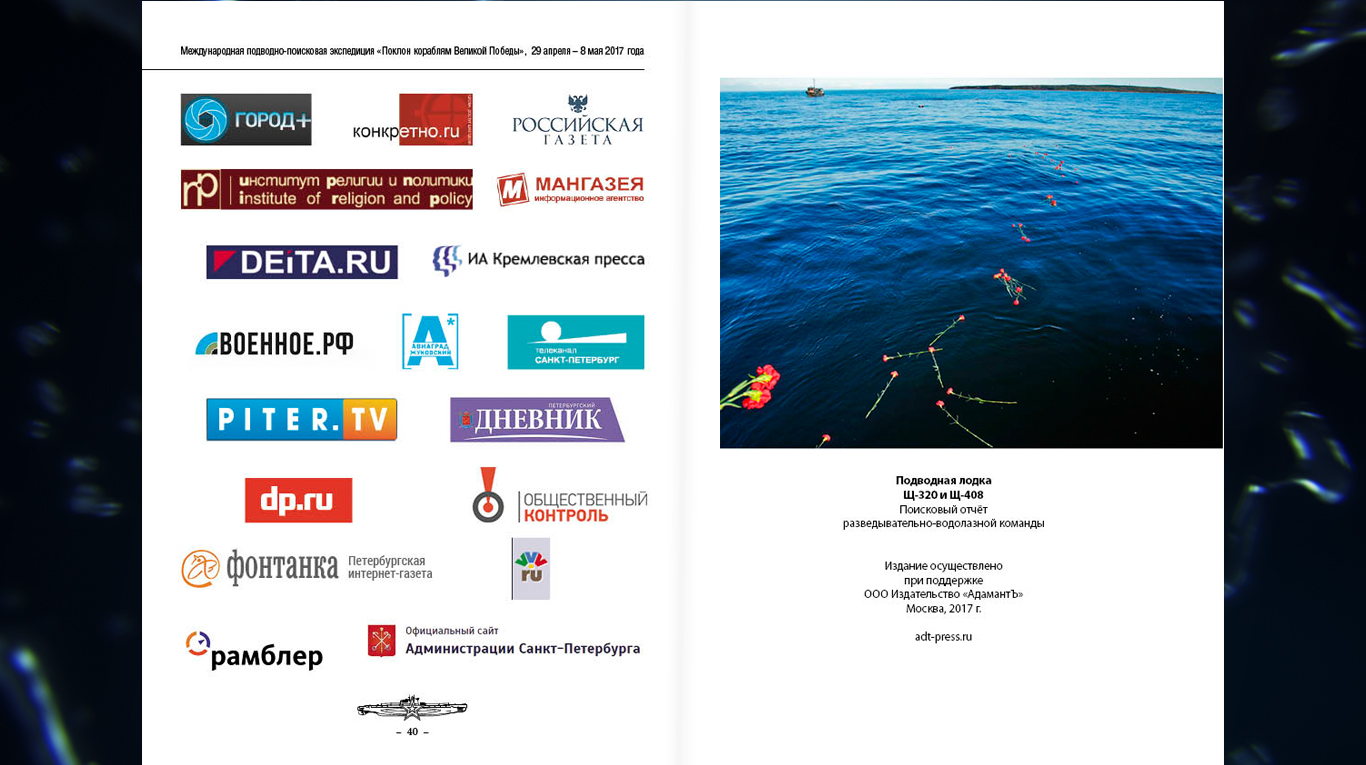Shch-320

Technical data
- Soviet WWII-era Shchuka-class diesel-electric X-bis series submarine (“shchuka” is Russian for “pike”)
- Length: 58.8 meters
- Max dive depth: 90 meters
- Armament: 2 x 45mm guns, 6 x torpedo tubes (4 x bow, 2 x stern), 10 x torpedoes
- Crew: 40 men
- Lost without a trace in October 1942
- Found and identified in the area of Bolshoy Tyuters Island on 1 May 2017. She sank as a result of a mine explosion in the German “Seeigel” (Sea Urchin) minefield.
- Depth: 49 meters
Submarine history
Shch-320 was commanded by Ivan Makarovich Vishnevsky and was one of the most battle-ready Shchuka-class submarines in the Baltic Fleet at the end of 1942. The submarine took part in six combat campaigns (two during the Soviet-Finnish war), during which she carried out four torpedo attacks and launched seven torpedoes. She had one confirmed victory, sinking the German freighter Anna Katrin Fritsen.
According to the official Soviet data, the submarine sank three enemy freighters, her crew was awarded orders and medals (the commander received the Order of Lenin), and the boat itself was awarded the Order of the Red Banner.
Award lists for Commander Ivan Makarovich Vishnevsky:
You can find more details about the history of the sub and its crew at the following sites (Russian only): “World War II under water” and Wikipedia.
You can also scroll through the album below to see a few historical photos of Shch-320, as well as her commander and crew:
Sadly, the crew would never learn of their awards. On 2 October 1942, the sub submerged to the west of Lavensaari Island to embark on her sixth combat patrol and disappeared.
As usual, there were a few hypotheses about the sub’s fate:
- She sank after a mine explosion at the “Seeigel” or “Nashorn” minefields
- She sank after a mine explosion at the “Yuminda” minefield
- She sank as a result of an attack by ASW forces near Gogland Island
We found the lost submarine on 1 May 2017 near the northern tip of Bolshoy Tyuters Island at a depth of 49 meters, at the coordinates of the “Seeigel” minefield, literally 500 meters from the Shch-406 wreck.
Our exploration of the wreck revealed:
- Based on the design features, we identified the hull as a Shchuka-class X-bis series submarine
- The boat’s heading is 210 degrees (exiting the Gulf of Finland), the seafloor is rocky and nearly the entire hull is visible
- The conning tower has been badly damaged by fishing nets, remnants of which are hanging from the periscopes
- The submarine sank as a result of a mine explosion above the nose rudders, the destruction zone is roughly 2 meters, the lightweight outer hull has been completely destroyed and the stronger inner hull has a crack up to a meter long and 20 cm wide
- A torpedo is sticking out approximately 0.5 meters from the upper-left torpedo tube, likely having been knocked out by the blast
Photos of Shch-320 made during the expedition in May 2017:
Further examination of the submarine revealed the full scope of the tragedy that played out under the cold autumn sea in 1942.
On the starboard side of the submarine is the anchor from a German mine, as well as a UMA-type mine itself, with crumpled fuse horns. The mine anchor cable stretches through the bow rudders. On the port side are the remains of the same kind of anchor and cable. The ship’s steering rudder is turned to the left.
Apparently, the ship “caught” a mine by hooking the mine anchor cable onto its right diving rudder. The mine slid down the ship’s hull but did not explode – it now lies on the starboard side. The ship’s commander began to maneuver away from the mine (the steering rudder is turned), but hit a second mine on the port side that exploded.
Some of the crew survived the explosion and attempted to leave the sinking submarine – a torpedo has been pushed ¾ of the way out of the aft torpedo tube (attempted evacuation through the aft tube). Sadly, something went wrong and they were unable to push it all the way out. The torpedo likely got stuck in the tube, leaving the crew in the 7th compartment with no chance of rescue.
Discovery and identification report (PDF, Russian only)
Discovery and exploration report as a photo gallery (Russian only):
Funeral services were held for the fallen at the site of the Shch-320 wreck on 7 May 2017. The sailors received military honors and a memorial tablet with the names of the deceased was placed on the Shchuka’s aft gun.





